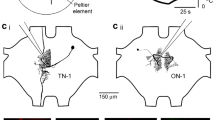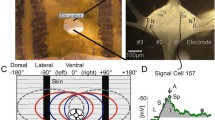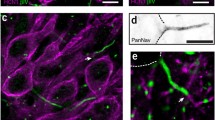Abstract
Bursts of spikes in T cells produce an AHP, which results from activation of a Na+/K+ pump and a Ca2+-dependent K+ current. Activity-dependent increases in the AHP are believed to induce conduction block of spikes in several regions of the neuron, which in turn, may decrease presynaptic invasion of spikes and thereby decrease transmitter release. To explore this possibility, we used the neurosimulator SNNAP to develop a multi-compartmental model of the T cell. The model incorporated empirical data that describe the geometry of the cell and activity-dependent changes of the AHP. Simulations indicated that at some branching points, activity-dependent increases of the AHP reduced the number of spikes transmitted from the minor receptive fields to the soma and beyond. More importantly, simulations also suggest that the AHP could modulate, under some circumstances, transmission from the soma to the synaptic terminals, suggesting that the AHP can regulate spike conduction within the presynaptic arborizations of the cell and could in principle contribute to the synaptic depression that is correlated with increases in the AHP.
Similar content being viewed by others
Author information
Authors and Affiliations
Corresponding author
Rights and permissions
About this article
Cite this article
Cataldo, E., Brunelli, M., Byrne, J. et al. Computational Model of Touch Sensory Cells (T Cells) of the Leech: Role of the Afterhyperpolarization (AHP) in Activity-Dependent Conduction Failure. J Comput Neurosci 18, 5–24 (2005). https://doi.org/10.1007/s10827-005-5477-3
Received:
Revised:
Accepted:
Issue Date:
DOI: https://doi.org/10.1007/s10827-005-5477-3




